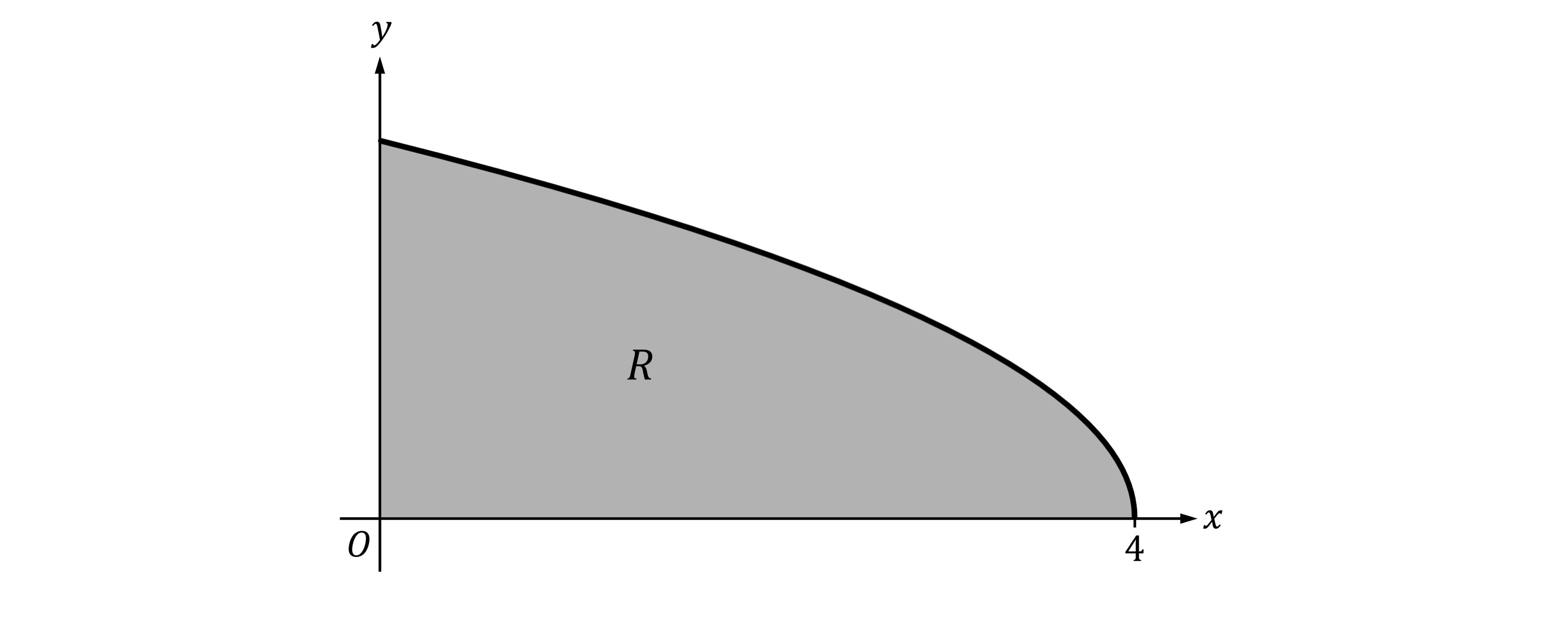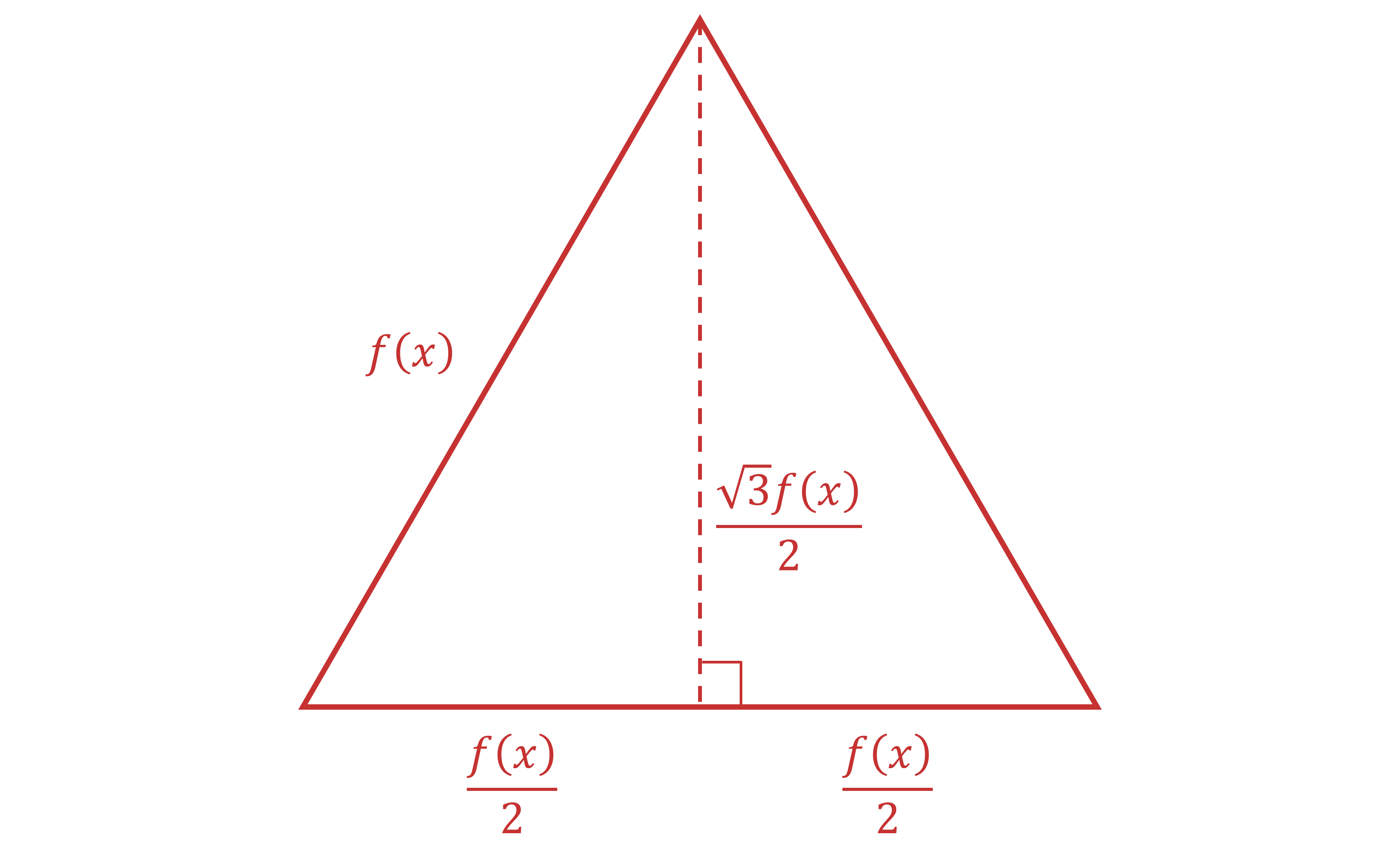Triangles as Cross Sections (College Board AP® Calculus BC) : Study Guide
Volumes with cross sections as triangles
How can I find the volume of a solid with a triangular cross section?
Use the basic concept
If the area of the cross section of a solid is given by
and
is continuous on
Then the volume of the corresponding solid from
to
is
You may need to create the cross sectional area function
based on information provided
For example
may depend on the values of another function (or functions) given to you in the question
Remember that the area of a triangle is
Worked Example
Let be the region enclosed by the graph of
and the
- and
-axes, as shown in the figure below.

Region is the base of a solid. For the solid, at each
the cross section perpendicular to the
-axis is an equilateral triangle. Find the volume of the solid.
Answer:
Use
Use Pythagoras' theorem to work out the relevant lengths in the cross section

At each the cross-sectional area is
Now the volume integral can be used
The question doesn't specify units, so the units of volume will be
3.464 units3 (to 3 decimal places)

You've read 0 of your 5 free study guides this week
Sign up now. It’s free!
Did this page help you?

